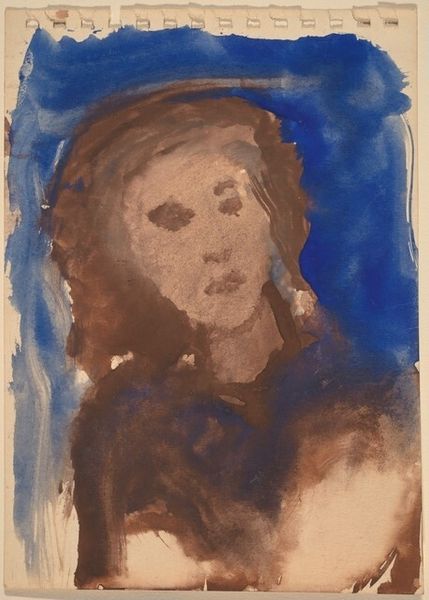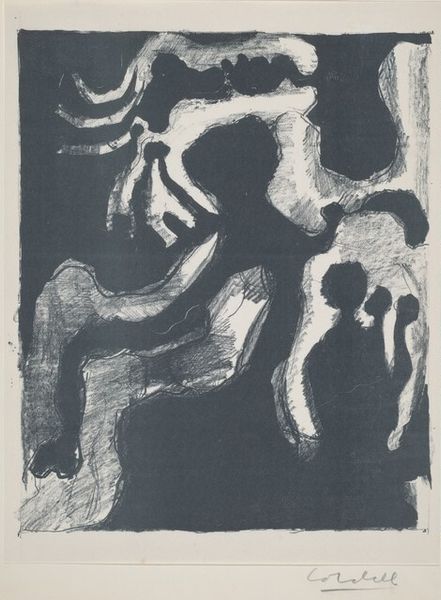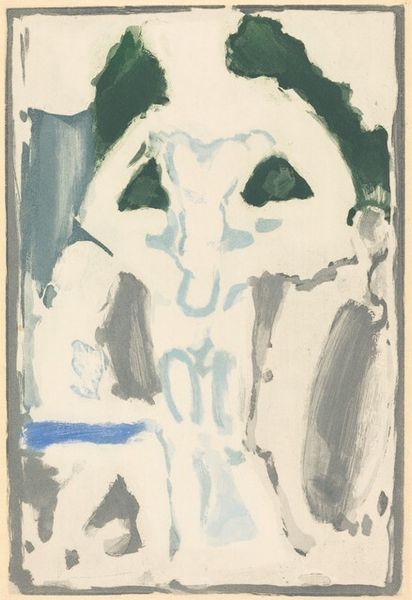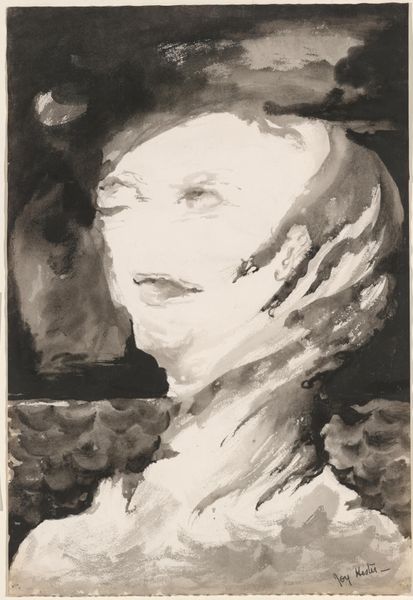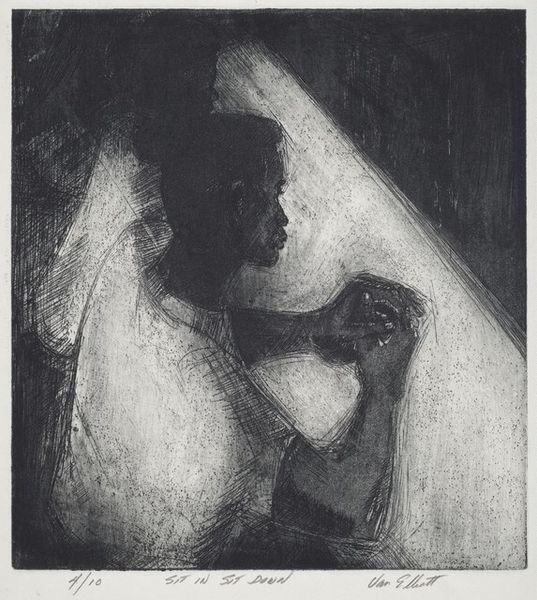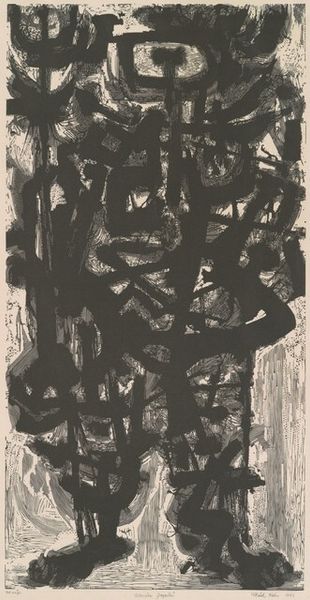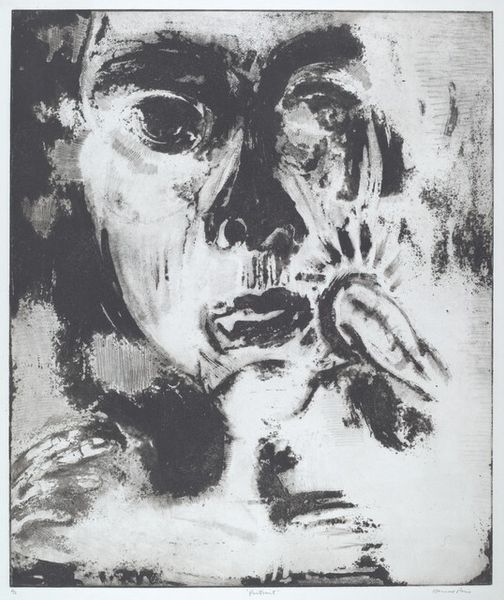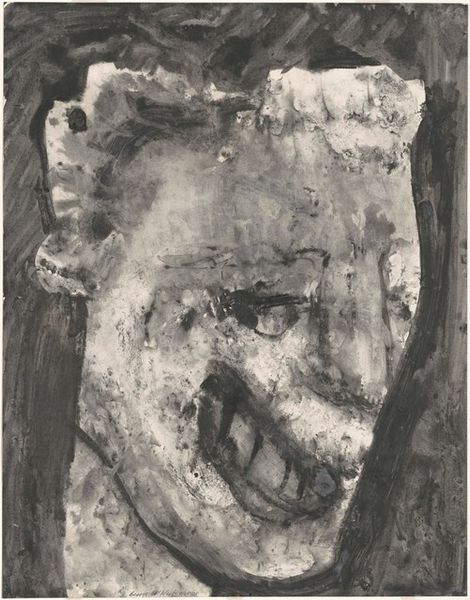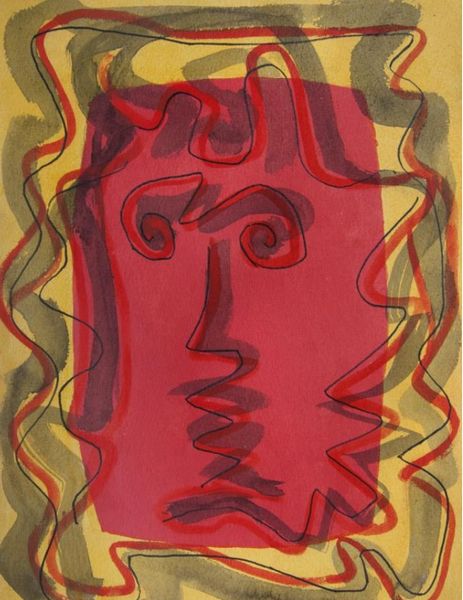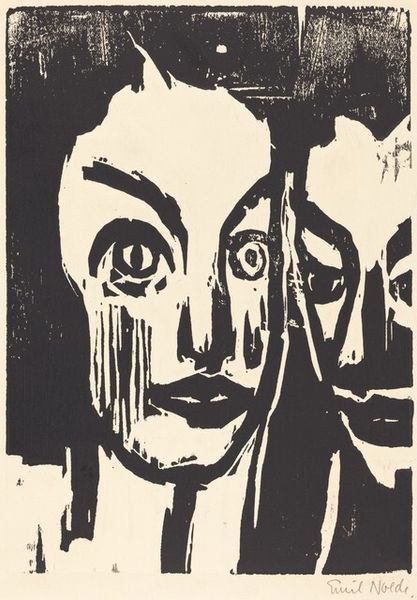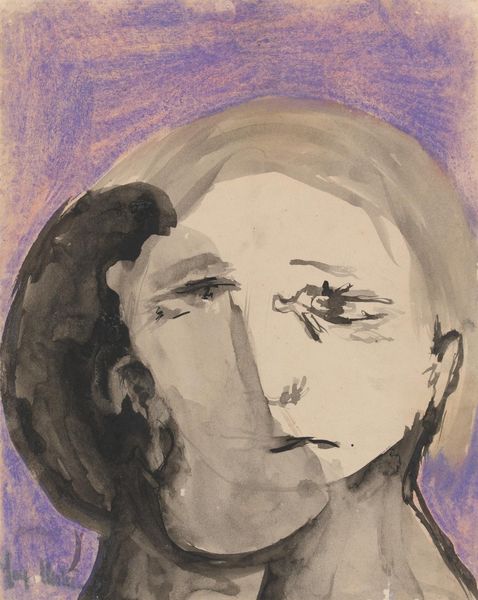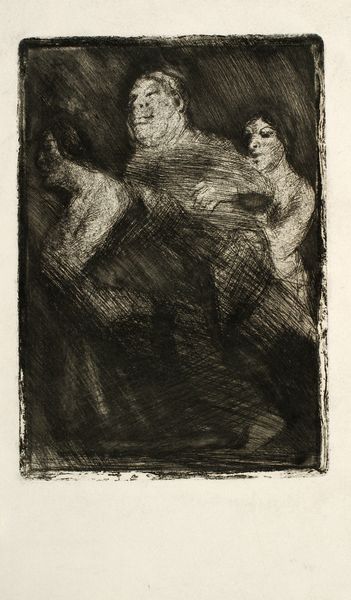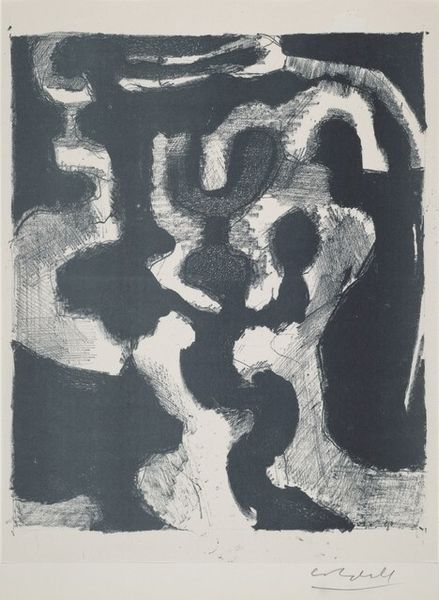
drawing, ink, pencil
#
drawing
#
figuration
#
ink
#
pencil
#
abstraction
#
modernism
#
monochrome
Dimensions: sheet: 15.24 x 23.18 cm (6 x 9 1/8 in.)
Copyright: National Gallery of Art: CC0 1.0
Curator: The mood here is definitely haunting, isn't it? The ghostly figures against the rusty ground feel intensely private, but somehow, the artist involves you in this dark secret. Editor: Indeed. This is "Portrait of a Woman and Child," a drawing executed by Mark Rothko, likely in the 1930s. He used ink and pencil on paper to produce this eerie monochrome artwork. The stark medium choice really draws the eye to the figure's social situation, not just as a mother but in her societal positioning and potential displacement due to race. Curator: Displacement makes sense when looking at how Rothko built his world; let's zoom in a little bit. The sketchy nature, where the paint isn't entirely consistent, speaks to artistic experimentation in terms of material engagement. We are not necessarily interested in a ‘flawless’ execution here, but in Rothko's search for form. He pushes the capabilities of the materials as much as any representational element, thus opening more access. Editor: And thinking of that social landscape and pushing, those large, dark, haunting eyes feel loaded, right? Given the date of its production, it's difficult not to connect Rothko's focus on maternity, and perhaps the vulnerability of women and children, within the interwar era. How does it impact your view knowing the piece was composed so soon after a huge global conflict and before another? Curator: Rothko’s art practice consistently pushed on form to communicate an array of human experience, especially regarding themes and material interactions; looking here at what kind of papers, pencils, and tools that Rothko was choosing to construct and depict ideas is very interesting in relation to accessibility. This isn't a costly setup we are seeing—not gilded brushes or expensive pigments; the construction is from bare material. Editor: I agree that, in both presentation and form, we see that reaching, that engagement. The use of more quotidian media makes the drawing incredibly relatable and intimate, despite its dark subject matter. A work that is both raw and vulnerable to any viewer willing to accept it. Curator: Absolutely. And by focusing on that act of making and using Rothko's process and decisions we are also engaging the material situation more effectively and empathetically, offering multiple contexts through the tangible objecthood of the artwork and the artist’s labour. Editor: The drawing then seems very keen on conveying the anxieties and atmosphere through abstraction. We have considered Rothko’s composition and his historical environment—letting that analysis give space for greater understanding of the social stakes.
Comments
No comments
Be the first to comment and join the conversation on the ultimate creative platform.
